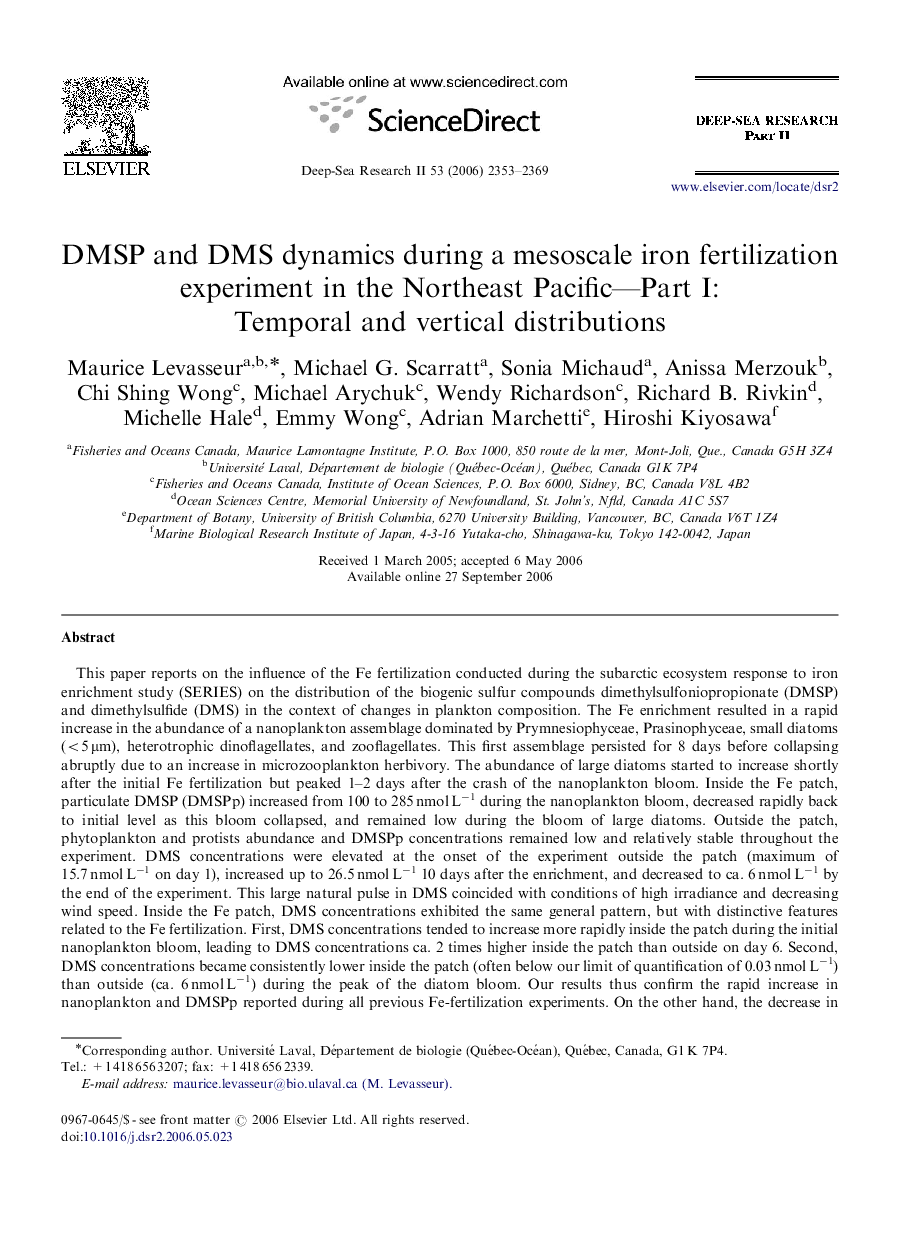| Article ID | Journal | Published Year | Pages | File Type |
|---|---|---|---|---|
| 4538363 | Deep Sea Research Part II: Topical Studies in Oceanography | 2006 | 17 Pages |
This paper reports on the influence of the Fe fertilization conducted during the subarctic ecosystem response to iron enrichment study (SERIES) on the distribution of the biogenic sulfur compounds dimethylsulfoniopropionate (DMSP) and dimethylsulfide (DMS) in the context of changes in plankton composition. The Fe enrichment resulted in a rapid increase in the abundance of a nanoplankton assemblage dominated by Prymnesiophyceae, Prasinophyceae, small diatoms (<5 μm), heterotrophic dinoflagellates, and zooflagellates. This first assemblage persisted for 8 days before collapsing abruptly due to an increase in microzooplankton herbivory. The abundance of large diatoms started to increase shortly after the initial Fe fertilization but peaked 1–2 days after the crash of the nanoplankton bloom. Inside the Fe patch, particulate DMSP (DMSPp) increased from 100 to 285 nmol L−1 during the nanoplankton bloom, decreased rapidly back to initial level as this bloom collapsed, and remained low during the bloom of large diatoms. Outside the patch, phytoplankton and protists abundance and DMSPp concentrations remained low and relatively stable throughout the experiment. DMS concentrations were elevated at the onset of the experiment outside the patch (maximum of 15.7 nmol L−1 on day 1), increased up to 26.5 nmol L−1 10 days after the enrichment, and decreased to ca. 6 nmol L−1 by the end of the experiment. This large natural pulse in DMS coincided with conditions of high irradiance and decreasing wind speed. Inside the Fe patch, DMS concentrations exhibited the same general pattern, but with distinctive features related to the Fe fertilization. First, DMS concentrations tended to increase more rapidly inside the patch during the initial nanoplankton bloom, leading to DMS concentrations ca. 2 times higher inside the patch than outside on day 6. Second, DMS concentrations became consistently lower inside the patch (often below our limit of quantification of 0.03 nmol L−1) than outside (ca. 6 nmol L−1) during the peak of the diatom bloom. Our results thus confirm the rapid increase in nanoplankton and DMSPp reported during all previous Fe-fertilization experiments. On the other hand, the decrease in DMS concentrations measured inside the Fe patch during SERIES is unique and shows that adding Fe to HNLC waters may not always lead to conditions that could mitigate climate warming.
